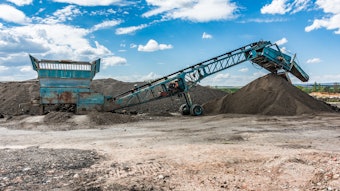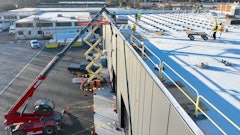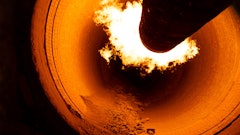

The U.S. federal government, with thousands of facilities and vehicles in locations across the United States and abroad, is one of the largest energy consumers in the world, but that consumption is declining. The U.S. Department of Energy's Federal Energy Management Program (FEMP) shows total delivered-to-site energy use by the federal government fell to 0.96 quadrillion British thermal units (Btu) in fiscal year (FY) 2013, the lowest recorded since 1975, the earliest year for which data are available.
In FY 2013, vehicles and equipment energy usage accounted for 62% of all federal energy consumed, with the remainder consumed by federal facilities. The U.S. Department of Defense and the United States Postal Service together accounted for 94% of vehicles and equipment energy usage, which declined 19% from FY 2011 to FY 2013. Much of the decline since 2011 can be attributed to lower consumption of jet fuel, a major fuel source for the U.S. Air Force and the largest energy source consumed by the federal government.
Energy consumed in federal government facilities has generally been declining over the past four decades. The reduction stems from both the total square footage occupied by the federal government, which continues to fall from its peak in FY 1987, and from the energy consumed per square foot inside federal buildings, which has been declining since FY 1975.
This is, as some would say, a big deal and in looking at the contribution of the building sector in achieving this goal, it is in fact a very big deal for green buildings.
While reducing fuel consumption was a meaningful factor in getting to this point, lower energy use in federal buildings was a key aspect in getting to this accomplishment. The analysis from EIA points to the 2007 Energy Independence and Security Act (EISA), which set requirements to achieve 30 percent reduction in federal building energy use and 65 percent reduction in fossil fuel consumption of new or renovated federal buildings by 2015, as a reason for the downward trend.
While not named specifically, a large portion of the new and renovating buildings meeting these targets and contributing to these energy reductions are LEED buildings. With more than 150 million square feet of federal buildings LEED-certified, it’s clear that LEED is helping federal agencies and departments lead by example and achieve the many benefits of green building.

![Img 1707[56]](https://img.forconstructionpros.com/files/base/acbm/fcp/image/2023/04/IMG_1707_56_.6437076c97961.png?auto=format%2Ccompress&fit=crop&h=191&q=70&rect=0%2C462%2C1920%2C1080&w=340)
















![Glp Porsche 072723 465 64ee42287c29e[1]](https://img.forconstructionpros.com/files/base/acbm/fcp/image/2024/03/GLP_PORSCHE_072723_465.64ee42287c29e_1_.65e88b8589b9c.png?auto=format%2Ccompress&fit=crop&h=135&q=70&rect=0%2C520%2C2250%2C1266&w=240)







